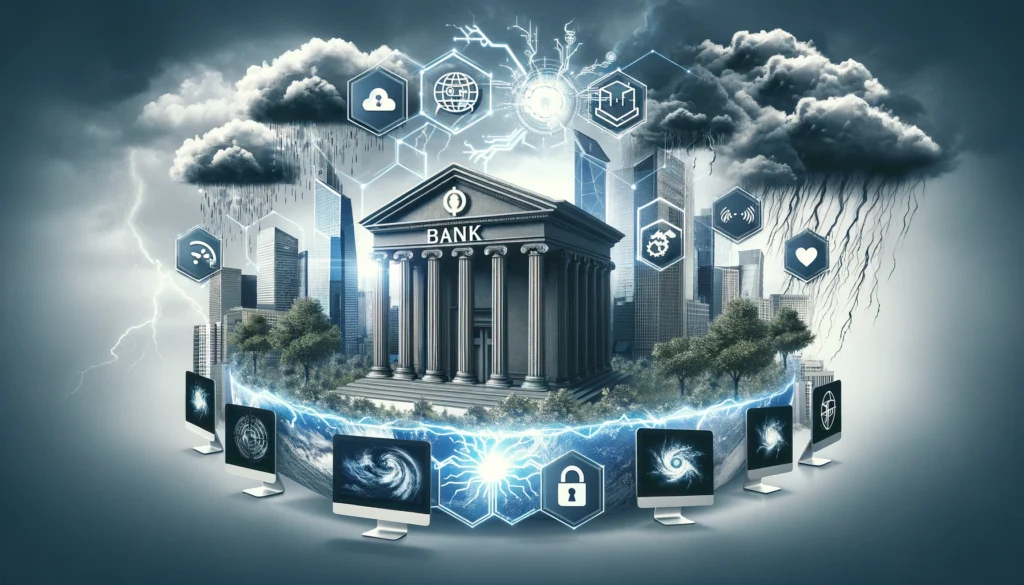Operational Resilience: The Shield Beyond Financial Solvency

What is the Backdrop?
In the intricate world of banking, financial stability is a widely acknowledged pillar. Yet, a new emphasis has emerged—operational resilience. This concept extends beyond disaster recovery and into the realm of a bank’s capacity to endure, adapt, and even thrive amidst the relentless onslaught of both internal and external disruptions.
Operational failures are a costly reality, with a recent Gartner study estimating they result in an average downtime cost of $5,600 per minute for enterprises, underscoring the severe financial impact for banks.
While financial crises like the 2008 meltdown exposed the fragility of capital reserves, evolving threats put the spotlight squarely on operational resilience. Cyberattacks, technological breakdowns, natural disasters, and even pandemics threaten to derail core banking functions. Operational resilience is the ability to identify these threats, mitigate their impact, and bounce back quickly, preserving the integrity of the financial system.
Why Operational Resilience is No Longer a Luxury
Banks are the lifeblood of modern economies. They fuel businesses, facilitate trade, and provide consumers with financial tools. If a major bank falters due to operational disruptions, the ripple effects can be devastating. Picture widespread loss of access to accounts, stalled international payments, or the collapse of ATM networks. The consequences impact individuals, corporations, and could even destabilize markets.
Additionally, regulators around the world increasingly hold banks accountable for their operational resilience. Frameworks like those from the Bank of England and the European Banking Authority highlight the need to not only withstand disruptions but to learn from them. This implies building a culture of continuous improvement in managing operational risks
The Evolving Face of Operational Threats
The threats to operational resilience are multi-faceted and dynamic. Some of the most notable risks include:
Cyberattacks: From ransomware to data breaches, cybercrime is relentless and evolving. In 2016, hackers breached the SWIFT messaging system, stealing $81 million from the Bangladesh Central Bank. This highlighted the vulnerabilities banks face in the face of cyberattacks.
Dependency on Third-Parties: Banks rely on a complex network of vendors for technology, clearing services, and infrastructure. The 2021 Fastly outage, affecting a major content delivery network (CDN), disrupted websites of many major banks, demonstrating the risks of dependency.
Technological Failures: Software bugs, hardware malfunctions, and network disruptions can cripple vital banking systems. The 2012 “Knightmare” trading glitch at Knight Capital Group serves as a stark reminder of the risks arising from technological errors.
Human Error and Malice: Operational risks can stem from internal sources. The 2011 UBS rogue trader incident, with losses exceeding $2 billion, underscores the devastating impact of human error and malicious activity within a bank.
Geopolitical and Environmental Events: Global conflicts, social unrest, pandemics, and natural disasters can all disrupt banking operations. Hurricane Sandy in 2012 left extensive power outages and flooding in New York City, heavily impacting trading operations and financial systems.
The Pillars of Building Operational Resilience
Operational resilience isn’t a one-time fix. It requires a comprehensive and integrated approach on multiple fronts:
Identification of Critical Operations: Determining the absolutely essential operations that cannot be disrupted is the first step. From deposit systems to payment processing, banks need a granular understanding of critical processes.
Impact Tolerance and Scenario Planning: Banks cannot prepare for every eventuality, but defining “impact tolerance” (how much disruption is acceptable) and conducting rigorous scenario planning help expose vulnerabilities and devise response strategies.
Strong Governance and Risk Culture: Effective operational resilience requires top-down commitment. Boards and senior management must set the tone, prioritizing resilience investments and embedding risk awareness across the institution.
Redundant Systems and Disaster Recovery: Building backups and fail-safes is classic, but remains critical. Disaster recovery focuses on restoring operations with minimal damage after a disruptive event.
Proactive Testing and Learning: Banks must regularly test their resilience under stress – think cybersecurity wargames. The key is to analyze results and adapt, driving continuous improvement.
The Future of Operational Resilience
Operational resilience is a journey, not a destination. As threats evolve, so must banks. Increasing reliance on artificial intelligence, cloud technologies, and complex interconnected systems will present both new opportunities and new risks. Banks that excel in operational resilience will position themselves as reliable partners in an unpredictable world, gaining competitive advantage, customer trust, and long-term stability.
Interested in speaking with our consultants? Click here to get in touch
Some sections of this article were crafted using artificial intelligence technology

